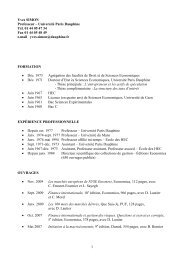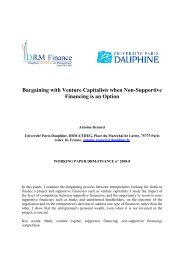Corporate governance and earnings management ... - CEREG
Corporate governance and earnings management ... - CEREG
Corporate governance and earnings management ... - CEREG
You also want an ePaper? Increase the reach of your titles
YUMPU automatically turns print PDFs into web optimized ePapers that Google loves.
produce dramatically different financial statement results” [the pooling-of-interests method<br />
<strong>and</strong> purchase method] (FASB, 2001b, Appendix 1, p. 5).<br />
Bryer (1995, p. 304) also mentions the influence of capital markets, stating that “… the<br />
motive for wanting to return to amortization [in the beginning of the 1990s] seems clear.<br />
When the merger boom of the 1980s subsided, investors began to dem<strong>and</strong> a return to<br />
conventional goodwill accounting to allow them to observe the rate of return on capital”. In<br />
our opinion, the capital markets’ influence is also reflected in the notion of international<br />
pressure, or the desire for international comparability which is sometimes mentioned (Bryer,<br />
1995, p. 305).<br />
The growing role of the capital markets is also due to the ever increasing significance of<br />
goodwill in corporate financial statements, as studied namely by Higson (1998).<br />
Figure 1 below summarizes the results of our analysis on the influence of social forces on<br />
accounting regulation for goodwill.<br />
Insert figure 1 about here<br />
3. The four historical phases of accounting for goodwill<br />
The interaction (or “game”) between the four groups of social forces named above, which<br />
will be discussed in more detail in the present section, resulted in changes in the regulations<br />
affecting goodwill over the period examined. But, <strong>and</strong> this is what gives this article particular<br />
relevance, the four countries studied went through the same phases but at different times.<br />
Schematically, the history of goodwill since 1880 can be divided into four phases with the<br />
recourse to a typology inspired by the traditional continental European theories of accounting<br />
(Richard, 2005):<br />
(1) The pure static phase (Richard, 1996, p. 31, 33): The term static (latin “stare”: to stop) is<br />
used in order to describe an accounting theory which assumes that the balance sheet, for<br />
the sake of protection of creditors, is to be valued on the basis of liquidative values<br />
15



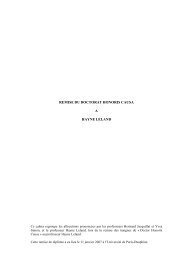

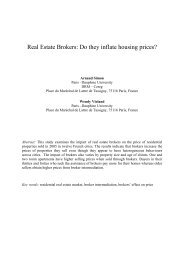
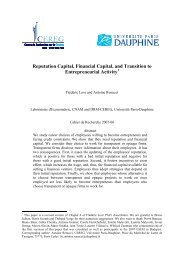

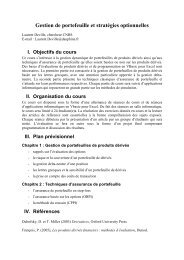


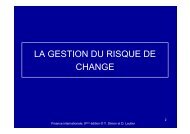
![& 6 ] ^ F ]^ - CEREG - Université Paris-Dauphine](https://img.yumpu.com/33326502/1/184x260/-6-f-cereg-universitac-paris-dauphine.jpg?quality=85)

